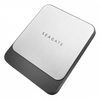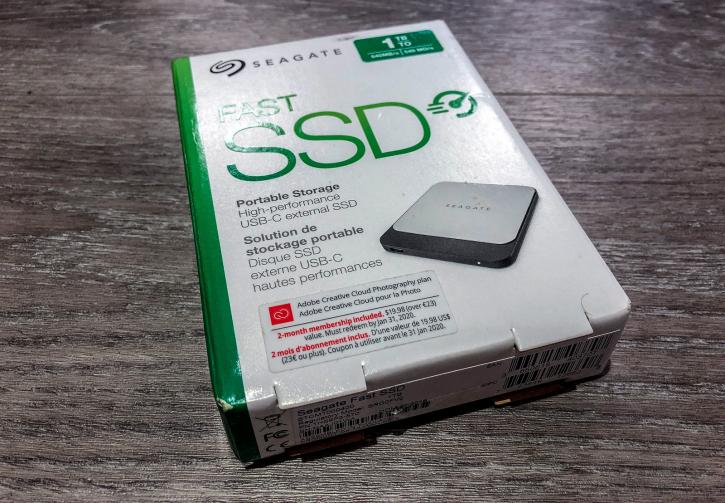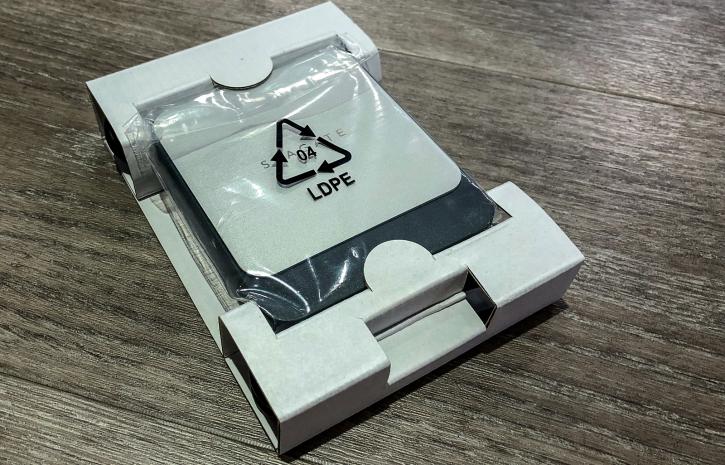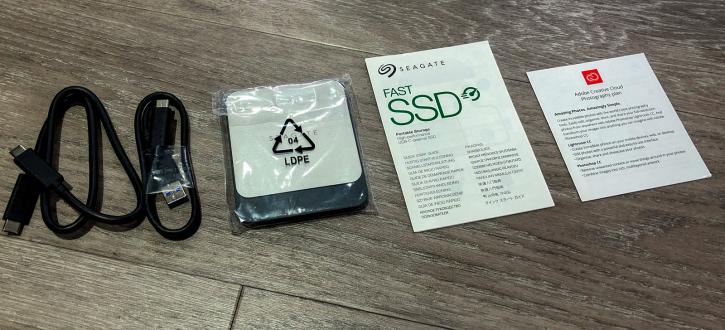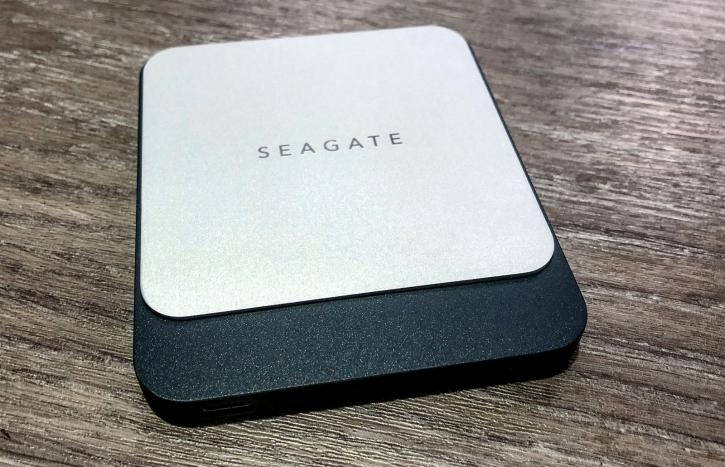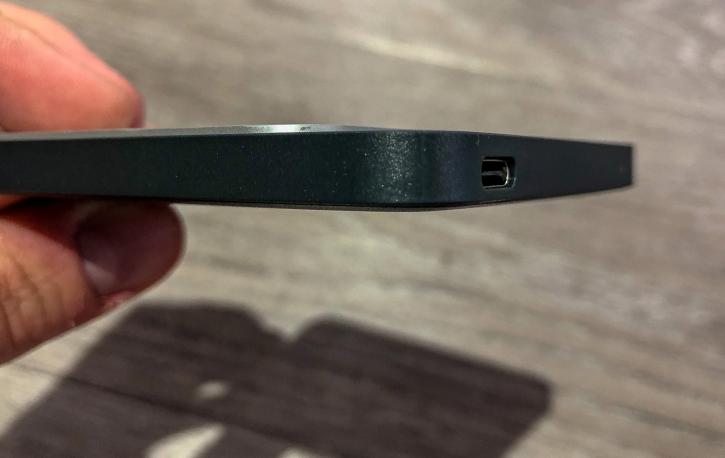Product Showcase
Right off the bat, the SSD sports a very plain and monochromatic visual flair, and it suits. Grey and white or black are entirely inoffensive colors that can match virtually any theme, so if you are someone who values that greatly, then you're covered here. The drive is not, currently, available in any other color.
This really is the definition of 'postage sized', and as I said before it would have no trouble slipping to a chunkier wallet or a small pocket in a rucksack. It weighs just under 100g, and you can be confident in it being able to survive bashes, knocks, and even drops (let's be real, who hasn't dropped hardware in their time?). A small note is that these portable drives are incredibly power efficient. Most of that is due to them have no moving parts, and this drive will consume around 2 W/ph, meaning you can use it without a worry in a laptop that isn't being actively charged. To be fair, given the advent of increasingly more capable power banks that support USB-C output in 2018, you could - potentially - carry around a self-charging and entirely portable setup without the need for a charger, and still have your external storage. Isn't 2018 neat?
Supposedly the drive can hit 540 MB/s read and 500 MB/s write, and I would presume that is sequential performance. Random read/write, no matter the sample size, is always degraded from those figures. If, however, those above figures are true, then that would put it in the same league as Samsung's excellent T5 drive, which is clearly what Seagate are going for. Samsung has long been known as the kings of the SSD industry, and it's refreshing to see more and more companies trying to take them on in the realms of both internal storage (both SATA M.2, SATA 2.5'', and NVMe M.2) and external storage. Competition is never, ever, a bad thing.
I did also mention earlier the product's use of USB 3.0, and not the newer 3.1 standards found in the T5. Naturally, USB-C can be over either interface, and it is up to the manufacturer. Given that USB 3.0's max theoretical bandwidth is 5 GBps, the above-claimed speeds are really pushing the limits of USB 3.0, so we'll have to see how this plays out. I'm hopeful, in fairness, because Seagate would not claim something that could be so easily debunked with just a simple disk benchmark run.
There are no specific shock of thermal guard ratings available on Seagate's site, so I would imagine they have not been implemented. Naturally, Seagate claims the device is shock resistant, but this isn't something I'd like to go into during my review. Percussive testing of products isn't in my vested interest. However, given that is an SSD, it's fairly safe to assume that should be able to survive a fairly decent drop or knock, given the lack of moving parts and the fact there is nothing 'external' to be broken off.
What about setup? I mean, there is some. By that, I mean you plug the drive in and click a bit. I went into a small amount of detail on this in the previous page, but I will briefly explain how the disk software works. It's a little unusual, but essentially the suite asks you to pick a target location for the 'mirror' to be located in. From then on, any files you drag/drop into either folder on the local drive or the Seagate SSD will be automatically 'mirrored.' Once you figure out that the target folder doesn't mirror anything automatically, and you have to add things to it, it's a lot more intuitive. Other than that, the kit is very basic, but arguably that's all it needs to do. It's not an auto backup software like what gets bundled with WD My Passport drives, and it isn't meant to be, either.
So, whilst not as initially 'complete' as the rival T5 unit from Samsung, this offering from Seagate does feature in all of the right areas, and has the added advantage of there being enough software out there to at least reasonably mimic the functionality of the Samsung drive. With all that said and done, shall we put this pocket rocket through the wringer and see if it comes out clean?
